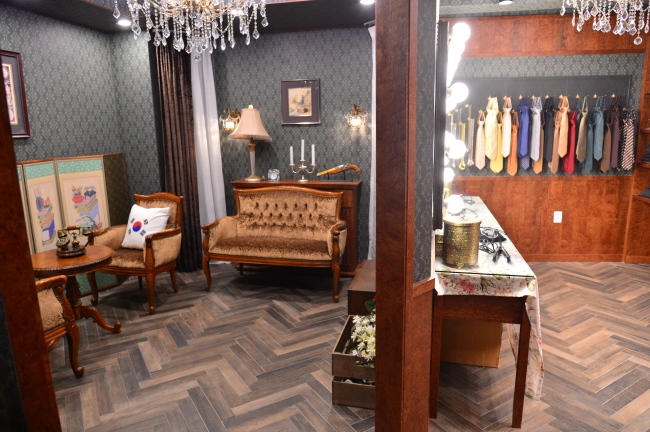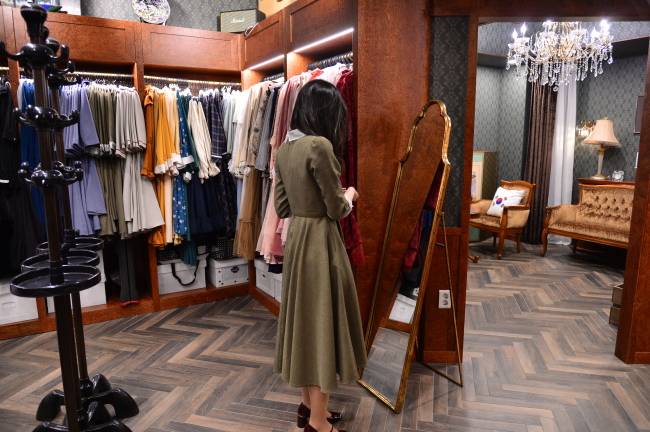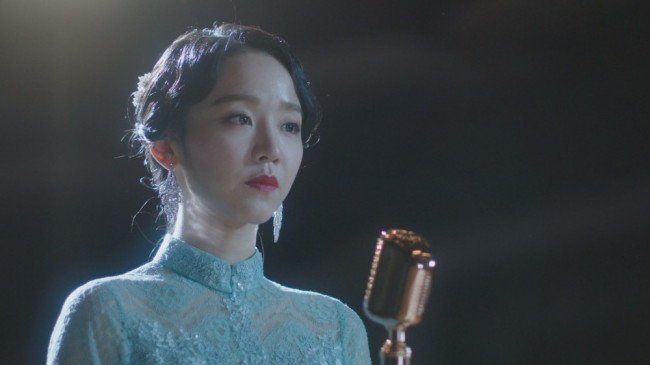[Video] Throwback to Korea’s roaring ‘20s in Ikseon-dong
Seoul’s up-and-coming hangout spot offers slice of Korea’s own Jazz Age
By Kim ArinPublished : April 4, 2019 - 16:32
Tucked deep into Seoul’s central district of Jongno lies Ikseon-dong, the latest hip hangout place in a city where fashion wears fast. At a glance, it is easy to see why the neighborhood’s photogenic cluster of modernized 20th century hanok, or traditional Korean houses, would appeal to the Instagram generation.
Crowded on weekdays and weekends alike, Ikseon-dong is imbued with the fashionable ambience of a particular time in modern Korean history: the late 19th to early 20th century period of modernization termed “Gaehwagi.”
Crowded on weekdays and weekends alike, Ikseon-dong is imbued with the fashionable ambience of a particular time in modern Korean history: the late 19th to early 20th century period of modernization termed “Gaehwagi.”


Targeted at visitors looking to relish in the full experience of the era, period clothing rental businesses are booming in Ikseon-dong.
Ikseon Boutique is fairly new to town, having opened its doors in September last year. The store’s manager Koo Ji-yeon told The Korea Herald the wide-ranging customer demographics, from teens to senior citizens of various nationalities, attests to the period fashion’s universal appeal. Hit 2018 TV series “The Hymn of Death” and “Mr. Sunshine,” both set in the first half of the last century, helped boost the trend, she said.
The boutique offers a wide selection of attire, accessories and shoes for a complete head-to-toe period dress-up. It is also equipped with a Gaehwagi-themed studio where visitors can take souvenir photos.
Luca Kay chose a checkered suit and matching beret to borrow a look from “Mr. Sunshine,” which he had watched in his home country of Taiwan.

“The drama was my motivation to visit here,” the tourist said. “This is like (what I) saw in the show.”
A customer in her 30s said she recently grew fond of the Gaehwagi style, characterized by the classic Jazz Age bobs and cocktail hats. She came to like it more after learning about the feminist struggles in fashion, she said.
“The Westernized fashion symbolized modern-generation women, who had access to higher education and were admitted entry into the workforce,” said the graduate student, who declined to give her name. Western clothes were a symbol of “modern girls” or the “new women” of the time -- a new generation of educated women.
Explaining the recent fascination with Gaehwagi, Hong Na-young, a professor in the fashion industry department at Ewha Womans University, said revisiting cultures that came before part of the natural cycle of fashion.
“People tend to be fascinated by fashion trends of a much earlier time, and find that of a closer past tacky and outdated,” she said.
As for the newfound fashionability of the modern-girl look, Hong explained that the “new women” were admired for being cultured and well educated, but at the same time they were derided for betraying the traditional concept of an ideal woman: obedient and reserved.
“The Korean women clad in Western fashion -- short-haired and legs bared -- represented a breakaway from convention of the time.”












![[Today’s K-pop] BTS pop-up event to come to Seoul](http://res.heraldm.com/phpwas/restmb_idxmake.php?idx=644&simg=/content/image/2024/04/17/20240417050734_0.jpg&u=)





![[KH Explains] Hyundai's full hybrid edge to pay off amid slow transition to pure EVs](http://res.heraldm.com/phpwas/restmb_idxmake.php?idx=652&simg=/content/image/2024/04/18/20240418050645_0.jpg&u=20240419100350)

![[Today’s K-pop] Zico drops snippet of collaboration with Jennie](http://res.heraldm.com/phpwas/restmb_idxmake.php?idx=642&simg=/content/image/2024/04/18/20240418050702_0.jpg&u=)